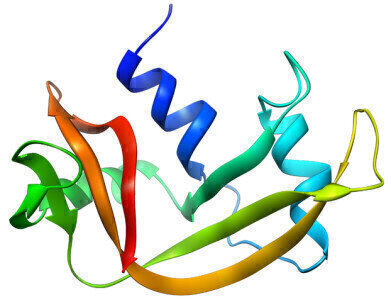Bioanalytical
History of Chromatography - Stein and Moore
Aug 26 2015
Column chromatography had initially been described by Martin and Synge in the early years of WWII - and small developments had been made during the war years. But in the post war period, as scientists could focus on their research, major advances were made in the equipment, techniques and - equally as important - in the discoveries being made with chromatography.
Stein and Moore played a role in advancing chromatographic techniques which they then used to make an important development in biochemistry - a development recognised with the Nobel Prize in Chemistry in 1972
‘for their contribution to the understanding of the connection between chemical structure and catalytic activity of the active centre of the ribonuclease molecule’.
Stein and Moore - who were they
William H Stein (1911 – 1980) and Stanford Moore (1913 – 1982) first came together just before WWII at The Rockefeller Institute for Medical Research to begin their postdoctoral work. They worked on developing an analytical procedure to determine the amino acid content of a protein under the watchful eye of Max Bergmann - one of the pioneers of modern protein chemistry.
After a brief interlude for the war - Moore stationed in Washington and the Pacific, Stein doing research at the Rockefeller Institute - they spent almost forty years researching and contributing to protein chemistry. The labs that they developed trained many future biochemists and they believed in sharing research ideas and techniques in meetings and journals to promote the development of protein chemistry.
It was a pair of articles published in The Journal of Biological Chemistry in 1948 that demonstrates their achievements in the development of chromatography and allowed them to complete the work that led to the awarding of the Nobel Prize in 1972.
Chromatographic developments
Stein and Moore were looking for an answer to the question of why two proteins made from the same amino acids could have different properties and functions. They decided that the way to answer this was to take apart the protein - but how could they do that and determine what it was made of?
Stein and Moore used a chromatographic idea introduced by Elsden and Synge to use potato starch as a column medium for separating amino acids and peptides. In the first paper, Chromatography of Amino Acids on Starch Columns. Separation of Phenylalanine, Leucine, Isoleucine, Methionine, Tyrosine, and Valine, Stein and Moore detail the starch column they used and the method used to count amino acids. In the second paper, Photometric Ninhydrin Method for Use in the Chromatography of Amino Acids, they go on to describe the method they developed to allow the quantitative determination of the amino acids they collected.
Stein and Moore continued to develop their chromatographic methods and during the1950s they reduced the run time for amino acid analysis of proteins was reduced from two weeks to five days. Analysis speed is still a factor in peptide analysis as discussed in the article, Optimising Protein and Peptide Speed and Resolution with Superficially Porous Columns.
Image By No machine readable author provided. Vossman assumed (based on copyright claims). [CC BY-SA 2.5 (http://creativecommons.org/licenses/by-sa/2.5)], via Wikimedia Commons
Digital Edition
Chromatography Today - Buyers' Guide 2022
October 2023
In This Edition Modern & Practical Applications - Accelerating ADC Development with Mass Spectrometry - Implementing High-Resolution Ion Mobility into Peptide Mapping Workflows Chromatogr...
View all digital editions
Events
Apr 28 2024 Montreal, Quebec, Canada
May 05 2024 Seville, Spain
May 15 2024 Birmingham, UK
May 19 2024 Brno, Czech Republic
May 21 2024 Lagos, Nigeria














